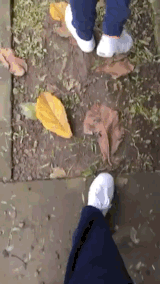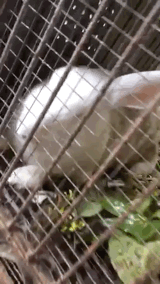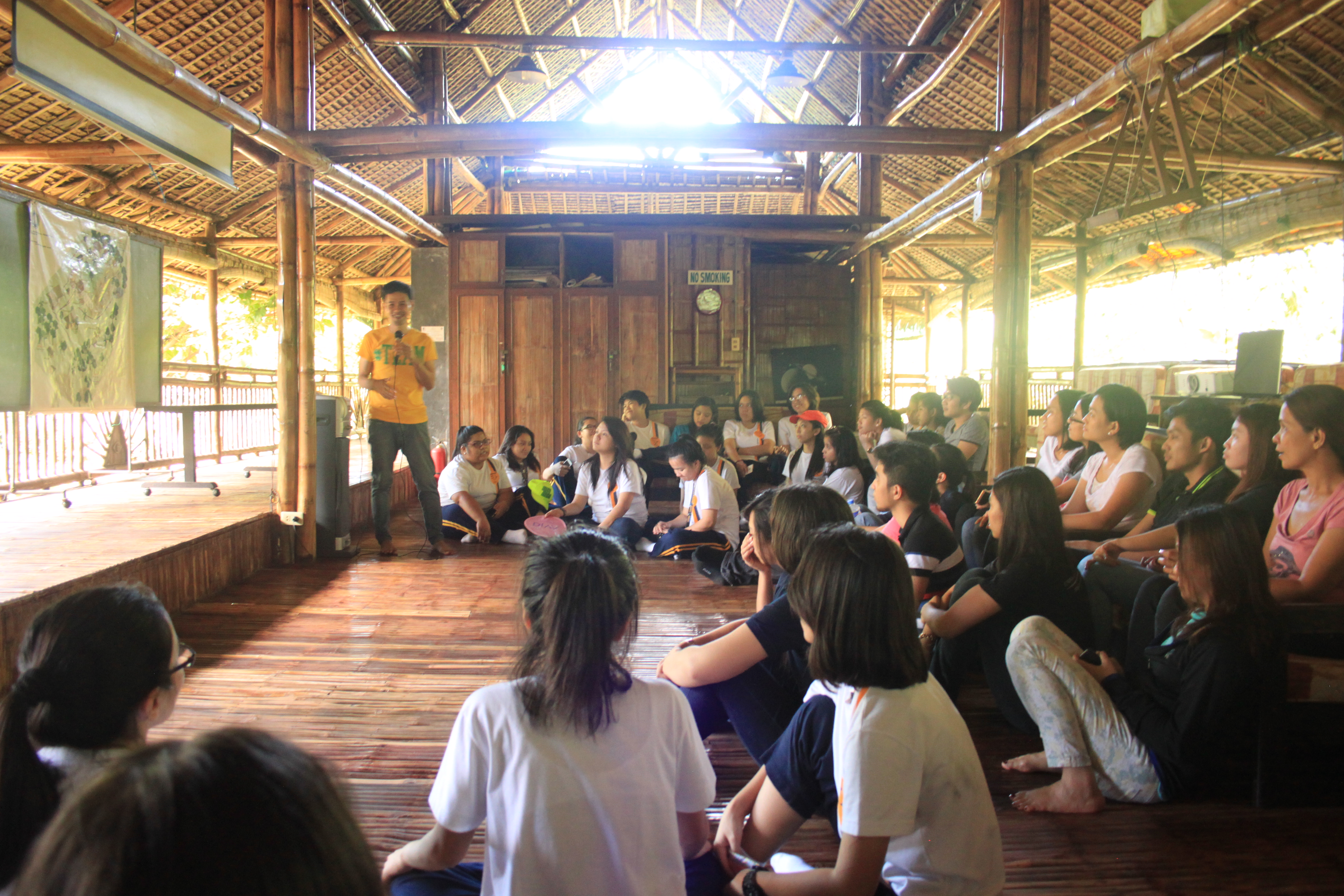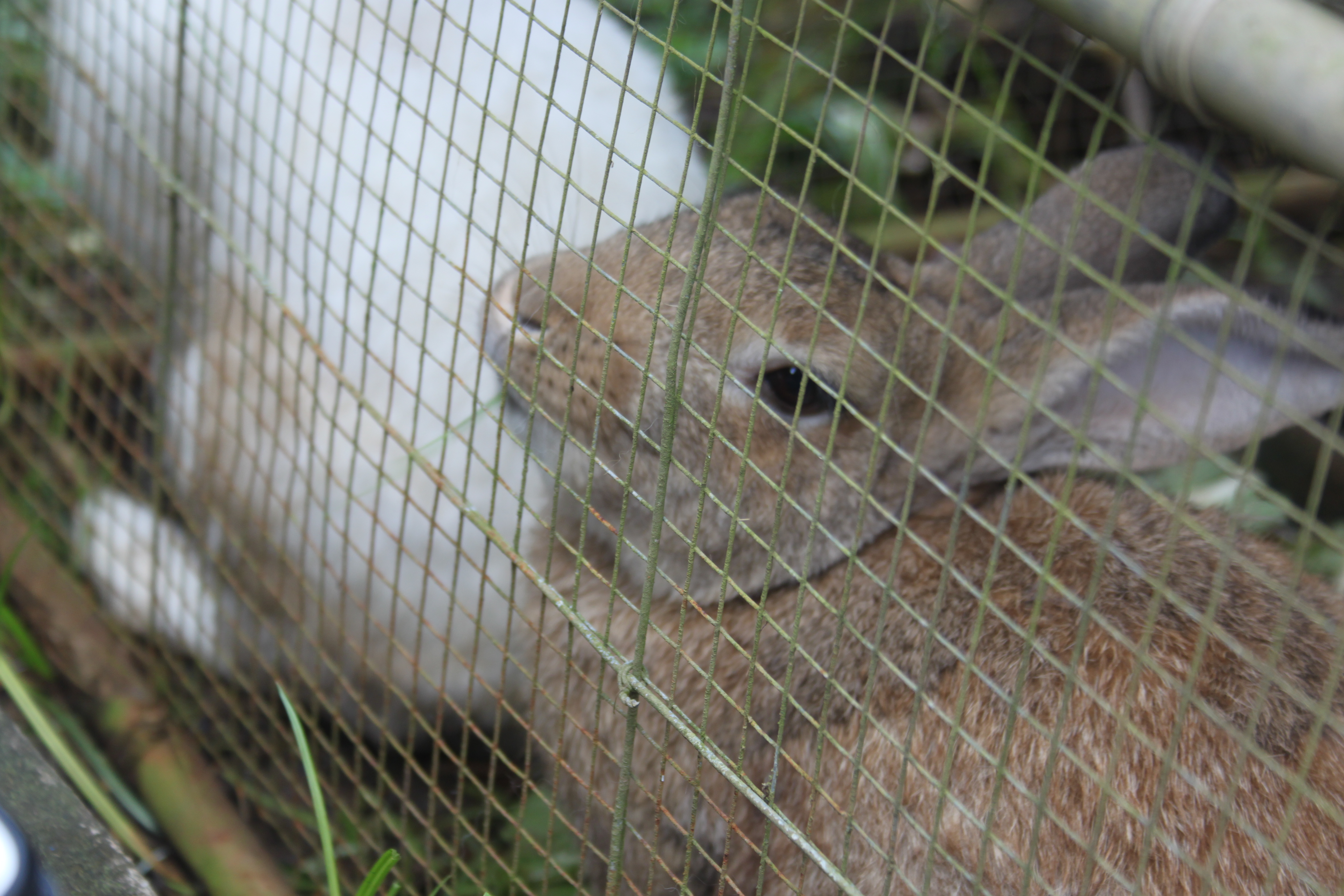Blogs
The students from the Environmental Education Elective Class of St. Theresa’s College Quezon City, together with their facilitator and other teachers, embarked on a journey to be one with Mother Earth, last October 1, 2016. With the goal of knowing and bonding more with the environment, the class engaged in many activities in the Center for Ecozoic Living and Learning. This center was founded in January 1999 by Columbian Missionaries, in partnership with friends. This is located Silang, Cavite, in a 1.2 hectare of land that the Noel Mondejar Foundation provided rentfree for 15 years. The dynamism and hard work of the founders of the center continues to create a largely self-sufficient Ecozoic farm comprising a home far, working woodlands, productive gardens, and restful grounds.
The Center for Ecozoic Living and Learning envision a world where humans live in harmony with the rest of creation through living in harmony with one another in aa just society. It's mission is also to contribute to the great work or God, whereby humans learn to move from astance of destroyer of the Earth to aa stance that is mutually enhancing. Also, its goal is to operate a spirituality center that wil propogate the story of creation as a means of alerting the human population to the current ecological and social crisis and awaken in them a vision that will give a direction for action at the present moment in history.
Man-Made to Nature-Made

From walking on a concrete floor, I walked onto the grassy ground; entering into the Center for Ecozoic Living and Learning. From devoting all of my time into technology, that day, October 1, was one of the days that I would, once again, be reunited with Mother Earth. For the past days, I have been busy with school works, which entailed me to rely on technology to finish them. Because I have been noticing that I devote too much time into technology, I’ve been anticipating this opportunity, with excitement. I wanted to break free from all the things that stressed be out, too the point that I was being isolated from my relationship with my family, with my friends, and with my environment. This has been a great time to go back to the basics and be one again with Mother Earth, together with some of my good friends.

At the start of this experience, I walked into a narrow pathway, surrounded by trees and plants. With the sun shining and the wind blowing, I felt so relaxed as if all anxieties of what are to come were all gone. Although we did have our gadgets, it was simply a way of capturing the memories that were to be formed that day. Memories filled with fun and knowledge. I though that "Today is going to be a good day."
The Twelve Year Old House
The first venue that we entered in the Center for Ecozoic Living and Learning was a twelve year old house made out of Bamboo. My first step into that house was a little unsteady because it felt as if it could break with even just a little weight. In fact, the first disaster of that day was when I broke like two Bamboo stick flooring. At first it was so embarrassing because my classmates were laughing and even my teachers, but I just tagged along and laughed as well. We first had a little time to talk among ourselves. It was a good way to catch up with friends, especially when there wasn't much to worry about.

Before starting anything else, the first thing we did was to pray for the Mother Earth, thanking for each of the elements that are present in Mother Earth. We read a poem that described the importance of each of the elements. The fire that provides us warmth and energy, which is mainly from the sun’s ray and the earth’s core. The water that quenches our thirst, which is mainly from the different oceans and rivers. The air that gives life to our breath, which is found all around us. The ground that hold everything that we build and grow, which is where we shelter. All these elements provide us the things we need in order to thrive and to live. As one Environmental Education Elective Class, we channeled all our energy into this solemn activity. Afterwards, we paid our respects to each direction: North, South, East, and West; which served as the opening of our journey. We walked out of the old Bamboo House.
Plantation of Different Herbs and Spices

Later on, we talked about the different zone present in the Center for Ecozoic Living and Learning. There are five zones. The first zone is the Vegetable Area, which is where a variety of vegetable are grown near the houses of the residents. Here, the people in the site, practice organic farming by not using synthetic fertilizers, but rather use organic ones, which are vermicomposted by worms.

We had entered a place filled with fruits, herbs, and spices. It looked so beautiful because the positing of each plant was strategically places, wherein it looked as if it was a park. In the middle there were different spices, such as pepper and chili. On one side, there was a tree of Rambutan. On the other side, there were a variety of herbs, such as citronella and eucalyptus. The one thing that I remember about this experience is that my classmates got so excited when we were told that we could get some of the herbs and spices. One of my classmates, Katrin, suddenly went to the bush of chili peppers and got herself a handful. Another good friend of mine, Roxanne, also got very excited to the point that she jumped over the barrier to get herself some chili peppers from the bush in the middle of the zone.

While my classmates were continuing to get different herbs and spices, our facilitator kept on reminding us that we should make sure that we would consume whatever we take. We were told to not waste anything, especially food. It just goes to show that we need to give importance to the things that we take. May it be food, materials, or other objects. We musn't waste anything, especially in our case, we were taking organic grown produce and crops. This not only saves us from wastage, but also from wasting money. Growing food organically is much more expensive because of the technology today wherein it is easy to simply grow crops and produce after chemically modifying them.
Close Encounter with Small Animals

The second zone is the Small Animals.
In this zone, the people there use the animals as an alternative for waste disposal. Some waste that human beings do not consume can be consumed by animals. For example, some fruit peelings and dried leaves are eaten and then when the animals eat it, the compost materials produced is used as natural fertilizer for the growing of plants.
After walking for some time, everyone suddenly got excited. I was so confused as first, but when I found out that all my classmates were going crazy over white rabbits and funny ostriches, I just had to join in. I was never an animal person. I didn’t have any pets at home and I don’t think I even plan to have one in the future. I always wondered why people would even keep pets, especially when it takes extra effort to care for it. I always focused more of my concern over things that mattered to human beings, but then I realized that it’s not just about us. We have to be holistic. We have to look all around us. The plants, the animals, the earth; they are all just as important as us. Perhaps the reason why people love animals is because of its cute and fragile nature. Plus, people see animals as companions who can be substitutes to people.
Organic but Sweet

The third zone is the Fruit Trees.
In this zone, that fruits are grown naturally. Often times, the fruits that we buy in the market have already undergone chemical modification so that it can taste sweeter and be much bigger, but in the site, it is seen that the fruits here are just as sweet as the ones that are chemically modified. It was also observed that there were many butterflies and bees present around the trees. These insects act as pollinators for the trees to bear fruits.

What we, students, really enjoyed the most here was the Rambutan given to us. After eating our lunch, we were given Rambutan and it tasted really sweet and good to the point that some of my classmates were asking if they could have more. It's very easy to miss the idea that our environment is able to produce such things. We tend to forget that our environment provides us food. We are distracted by so much things around us that we don't get to just sit down and think about where the things we use come from. Which is why this opportunity of thinking and reflecting has been a very good experience for me to appreciate the things offered and given to me.
Reduce, Reuse, Recycle, and Refuse!

The fourth zone is the Renewable Materials Area.
Have you ever thought about recycling your garbage or unwanted items? Well, honestly, I think most people try to, but aren’t actually able to because they can’t think of ways to do so. Well, one way of not wasting it is by giving it to a recycling center. Recycling centers usually know where to bring the different materials that can be used again. In our case, when we went to the Center of Ecozoic Living and Learning, they had the Materials Recovery Facility, where many object, from tins cans to broken microwaves, were stored there for future reusing and recycling. He good part about this is that even that we learned even the smallest of garbage are important and can still be reused.
In St. Theresa's College, Quezon City, we are taught to segregate our garbage, this helps in the proper throwing of trash. Also, in our school projects, we were encouraged to used recycled materials so that we can not just save up on money, but also save the Earth. For example in one project, CLAYGO (Clean As You Go), students are encouraged to properly throw their trash in the proper bins and to not simply leave it at the places where they stay. This exercises students to always be conscious of their trash, especially when they go in their homes and outside of their homes. Another project is the SINOP (Sama-sama itaguyod natin Oras at Panahon para sa Kapaligiran) program, wherein students are encouraged to reuse materials in different projects and activities, like in the Christmas projects where student make their own Christmas work of art by using recycled materials.
Stool, Methane, and Fire!

As the first thing we did after exiting the house was to go to the Biodigester. In this place, the Center for Ecozoic Living and Learning recycles the stool (poo) of people that are stored in the septic tank. Al though this sound gross, at first, it’s actually a really good way in producing fire as the stool of people contains Methane. Before, this was used in heating food and warming houses, but sadly because less and less people visit this place, the supply of stool has decreased significantly, which is why we were encouraged to donate our own stool.
Now, if you think about it, where do get our source of heat and energy, especially when we're cooking or heating food. We'd use petroleum or gas. These naturals gases are not renewable, which means that these cannot be easily replenished, unless we wait for a few thousand or hundred thousand years. After learning about the use of our stool as a component in the Biodigester, I think that in the future we can use this technology as a way of developing a sustainable energy and heat source. With this, we can help the Earth in replenishing its natural resources, such as gas.
Faith with Nature

As we were toured some more, we passed by a Church made out of Bamboo. Although we didn’t stay too long to either pray or talk about the venue, we saw how complex its design was and how intricate its building was. In St. Theresa’s College, Quezon City, we were always taught to be thankful to God for the creation of the environment. This brought me back to what my school has taught me. Indeed Mother Earth pulls you back to your roots and reminds you of the things that were taught to you.

The importance of thanking God is a way for also asking for guidance. Guidance in a sense that we need to be guided in what we do, especially since we are to not just think about ourselves. We must always go back to where we came from, God. We must be thankful for the many things that have been given to us for we greatly benefit from the environment. Also, we must remember the ecological principle that we are the stewards of the Earth. We must not only take from the environment, but we must also give and care for it as it is a gift from God.
Collaboration, Fun, and Knowledge

The three most important things that I have given value in were collaboration, fun, and knowledge. These three things will always be something that I treasure because I know that these will help me in life. Toward the end of the day, the class gathered once again in the Bamboo House and were divided into groups wherein we had to share our experiences and learning from the day's activity. Our group was a little different. instead of simply saying our answer, we had a small production, where everyone in the group either acted out, danced, or sung. We also found out more about each other's point of views on caring for Mother Earth. Aside from the learning gained on that day, we learned to have fun without our gadgets. Although we did use it for documentation, we mostly had fun because of the presence of each other's company. We learned that it's not just ourselves, but it's about everyone.

Being One with The Earth

As an ending activity, we had planted different herbs. As a way of symbolizing our oneness with Mother Earth, we touched and felt the soil that would cultivate the plants that we are to grow. We need to remember that we will return to the earth when our time comes. We should not just say what we want to do. We must always do what we say for actions speak louder than words. Being one with the earth isn't just about having to say that something or sign some petition, but to live out what you believe and what you are fighting for. As a generation who is almost completely encapsulated in a technological paradigm, wherein we fail to look up from our gadgets and see the crisis that is happening around us. We are in a time where people either lack consciousness or lack the concern for the problems in our environment.

This has to change. We must look around at the wonders of creations and realize its importance and value in our lives. We must realize that the crisis of our environment is real. We have to realize that we are needed to help stop this growing crisis of climate change and global warming. Our generation must fight for what is right; must fight for the welfare of our environment; must fight for the future generations to come. We must show the younger generations that they are important because if we screw up today, then their future will be affected negatively. We need to aim for a just and sustainable future, not only for ourselves, but for the future generations.
We can do this by applying what we have learned in the Center for Ecozoic Living and Learning. That is to Reduce, Reuse, Recycle, and Refuse; to grow more plants, especially trees; to spread awareness among our communities; to appreciate the different creations around us; to not waste anything; to always go back to nature; to look up from our gadgets and see he crisis around us. The fate f our earth is in our hands.
(The pictures seen in the post were taken myself, Sir Gilbert Reyes, and Ms. Bettina Quilapio. All credits given.)


